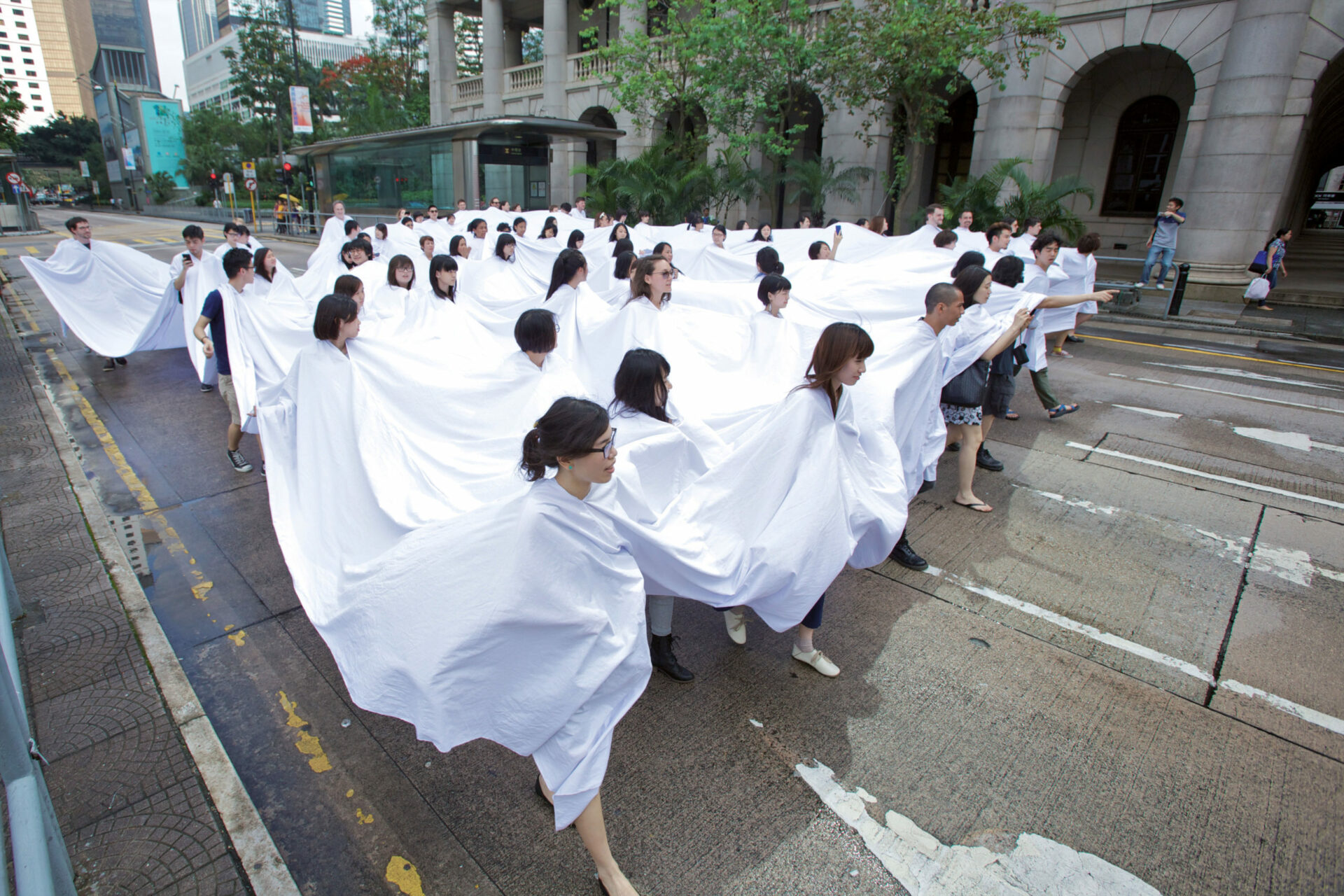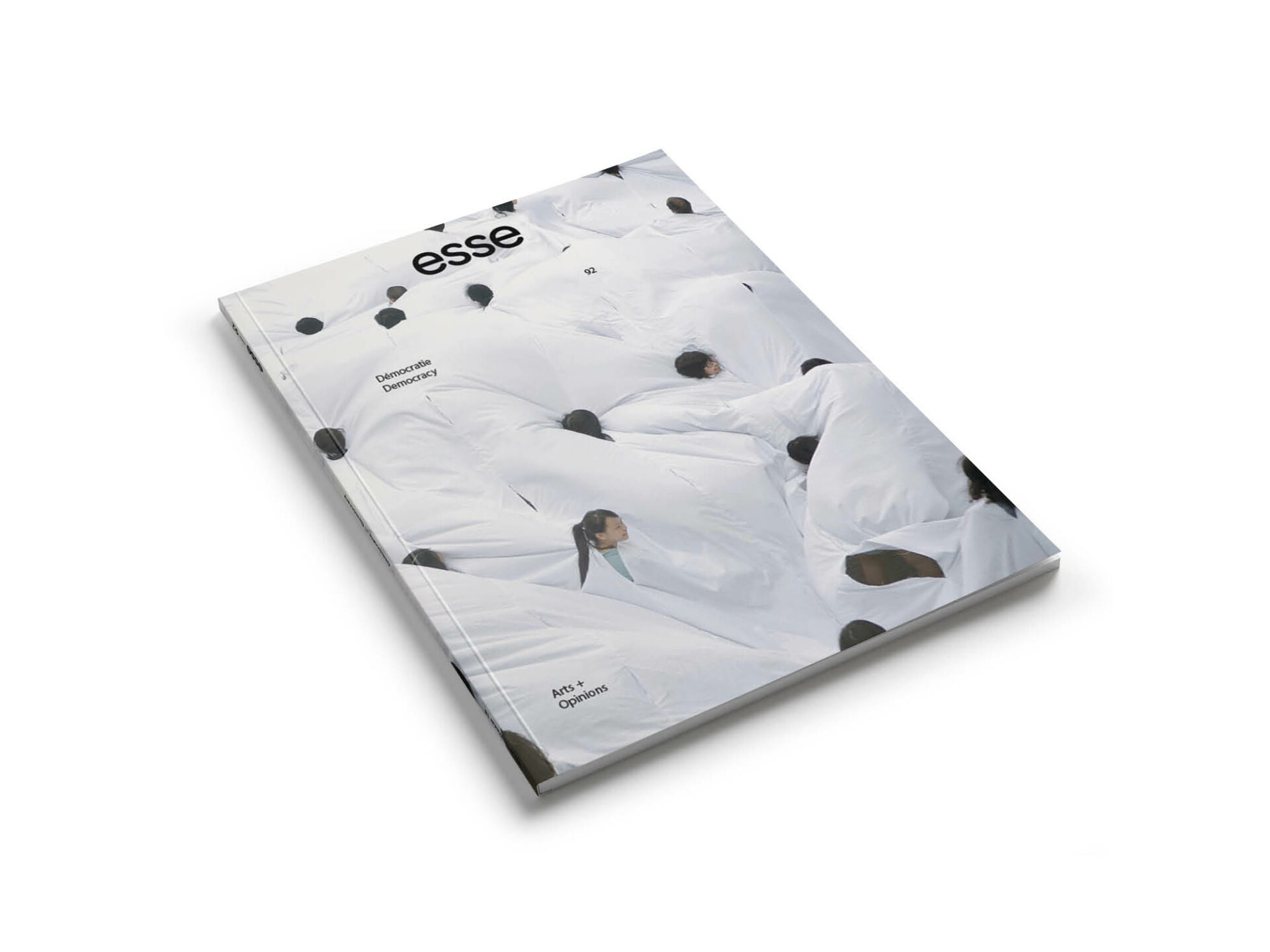
To Walk Together: Democracy in Movement?
The 2017 retrospective of Brazilian artist Lygia Pape (1927 – 2004) at the Met Breuer in New York City opens with a wall-size photograph documenting one of Pape’s iconic performances, Divisor (1968). The image transmits the visually striking qualities of the original action, in which dozens of people bound together with a large white sheet navigated the streets of Rio de Janeiro. Creating a collective body out of the individual performers, Pape produced conditions for them to act as a unified social body; the sheet dividing their heads from their bodies beneath evoked the surveillance by the Brazilian military dictatorship. In line with much of Pape’s work during this period, Divisor, as a social sculpture, was activated only with group participation. Reperformed on the occasion of the exhibition at the Met Breuer in March 2017, it still resonates in today’s socio-political and aesthetic climate. Divisor addresses a contemporary desire to critically rethink the ways in which we relate to and in urban spaces. Bringing together — quite literally — various bodies in a processual march, the performance offers what movement scholar Randy Martin describes as a “kinesthetics of protest”: it “embodies what it seeks to achieve, stilling the impossible so that an alternative might become liveable.”2 2 - Randy Martin, “Toward a Kinesthetics of Protest,” Social Identities 12, no. 6 (November 2006): 791.




